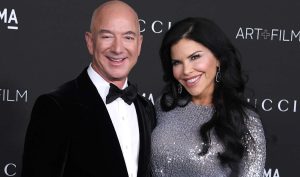He shares how the U.S. is at risk of falling behind China in relation to AI development and innovation, mainly due to the legal constraints at hand.
- Artificial Intelligence seems all the rage these days. How would you describe AI generally to a layman (or a jury)?
There are many competing definitions, so I’m sure to get this wrong, but in my view, Artificial Intelligence (AI) is broadly the ability for a computer (or computerised device) to do something useful, intelligently, which in some cases may be analogous to skills once thought to be the exclusive domain of biological intelligence. “Machine learning”, which you often hear in the same context, and which is prevalent in the scientific literature, refers to the science of “training” computerised machines to do these useful things, intelligently. Contemporary examples include: natural language processing, such as when you talk to a smart device, or your phone, or your car; image recognition, such as when you unlock a computer or smartphone with a camera or fingerprint; classification, such as when your digital camera recognises a face or another object in a scene; prediction, such as when your TV suggests something for you to watch; and many, many other applications. For efficiency, I’ll just refer to “AI” for our discussion.
- AI is not new, so why is there a sudden explosion in interest?
AI is not new; many of the foundational principles originated in the ’50s and ’60s. You’ve probably heard of the “Turing test”, which is named for a 1950s mathematician—Alan Turing. But the recent confluence of massive data collection (and collections) and plentiful, cheap, and powerful computing resources has created an AI primordial soup, so to speak. These conditions have led to an explosion of new AI technologies.
- Where are your clients focusing their development in AI?
Our clients are doing clever things in all aspect of AI. Fundamentally, most AI capabilities are enabled by trained models, and broad areas where our clients are innovating include: improving model architectures to increase their performance potential; improving model training so that it is faster, performable on a wider range of devices, and ultimately more effective; applying models to new technology domains to enable entirely new use cases; and improving the computing hardware that enables the aforementioned aspects.
By way of example, your smartphone likely has a dedicated processor for AI tasks, which was not the case just a few years ago. Such hardware enables model training to be performed locally on devices, which in-turn allows models to be personalised based on your own data while simultaneously mitigating data privacy concerns. It also allows for local inferencing, which makes AI-based functions less reliant on remote compute power, such as cloud-based services. However, models that run on devices like smartphones use model architectures enhanced for efficiency as compared to those that run on high-powered computing equipment. This way, your smartphone can do clever things for you all day, without running out of battery by dinner, and without needing data coverage for all those tasks. Thus, like other complex systems, AI offers many avenues for innovation.
Simply describing the invention for what it is, without “selling it”, so to speak, leaves a patent prosecutor or litigator with fewer textual tools to defend a patent’s validity later
- Does your firm do a lot of work in AI?
Yes, and the volume is growing at an impressive rate. Globally, interest in AI is translating into large research and development budgets, and with that, significant patenting activity. Worldwide patent offices are all reporting the same trends—significant increases in “AI” related filings across many technical domains. We are seeing the same.
- Are there any special considerations for doing AI-related patent work?
Absolutely. AI, and more particularly, machine learning, has its own lexicon. To communicate effectively with our clients, we need to speak that language. For example, understanding the fundamentals of machine learning is, in my view, a prerequisite for understanding many AI-related innovations. And this sort of understanding is critical for describing AI innovations in patents in a way that is likely to survive USPTO and later litigation scrutiny. Recognising that early on, and despite having a significant amount of more general software patenting experience, I, and many of my colleagues at Patterson + Sheridan, have spent considerable time educating ourselves on AI to be more effective for our clients. Thankfully, there is a vast amount of content available, including standalone courses offered through great schools like Stanford and MIT, to educate oneself.
- How is the patent law landscape for AI in the United States?
Putting it politely? It is challenging. I’ll save the diatribe (available by request), but in short—a very unfortunate Supreme Court opinion in Alice v CLS Bank spawned an even more unfortunate set of Federal Circuit opinions that weigh heavily in this area. The problem lies in the interpretation of Section 101 of the Patent Act, which defines what is patent eligible subject matter. Whereas Section 101 states broadly that “[w]hoever invents or discovers any new and useful process, machine, manufacture, or composition of matter, or any new and useful improvement thereof, may obtain a patent therefor subject to the conditions and requirements of this title”, the Courts over time have created “judicial exceptions” barring patentability of, for example, laws of nature and, most pertinent to this context, “abstract ideas”. As I have written in other articles, academics, amici, and even the Federal Circuit itself have explicitly pleaded with Congress to fix the “subject matter eligibility problem”, but no such luck as of yet. This has trickled down to the USPTO too, which has struggled to apply the law consistently to examination. The net result has been a stifling headwind for “computer-implemented inventions”, which include AI-related inventions, trying to make their way through the USPTO.
Judicial activism has unfortunately twisted the law out of sync with its original intent and our technology predilections.
All that said, I do think there is a general consensus now that there is a real problem that is affecting real, valuable innovations in the United States, and that it needs solving. In 2019, Senators Thom Tillis (NC) and Chris Coons (DE) held hearings and seemed to be getting traction on reform in this area, but I think the contentious election bogged it down. Now that we’re through the election cycle, my hope is that this effort will pick up again. In fact, just recently at a Chamber of Commerce event in January, Senator Tillis noted pointedly that “Our patent eligibility jurisprudence is in shambles. … The fact that we have courts saying a garage door opener is an abstract idea and that innovative diagnostic tests are just laws of nature is bewildering to me. If we do not provide great clarity and consistency in this area of law, America will lose the 21st century innovation race.” I concur.
Notably, Senator Tillis along with Senator Tom Cotton (AR) sent a letter to the acting director of the USPTO in March urging the USPTO to implement a pilot program to “avoid unnecessary and inefficient rejections on grounds of patent eligibility, and in the process improve [the USPTO's] effectiveness.” This gives me hope.
- Are the legal challenges for AI related to any broader technology policy in the United States, and if so, how does that compare to other countries?
I think it’s fair to say that the U.S. has historically been pro-technology from a policy standpoint, and has had a strong patent system to complement that policy. U.S. companies are certainly doing incredible technical work generally, especially in regard to AI. But judicial activism has unfortunately twisted the law out of sync with its original intent and our technology predilections.
Other countries have seemingly aligned their domestic policies towards AI with their legal policies, and that’s hurting the U.S.’s competitiveness in this area. By way of example, China has made building a domestic AI capability a top political priority and is evolving its own intellectual property laws to that end. I believe this is drawing innovation out of the U.S. in the same way that a better tax policy drives companies to move between states in the U.S. Just recently I read an article in which the U.S. had fallen out of the top 10 most innovative countries in the world, which is disheartening, and I think not reflective of our capability. I believe our uncertain legal landscape with respect to critical technologies of the day, like AI, is a factor in that backslide.
judicial activism has unfortunately twisted the law out of sync with its original intent and our technology predilections.
- What will it take to reverse the trend?
Well, I hate to pick on the Supreme Court, but that group needs to take a consistent stance on textualism versus activism. By way of example, in a 2020 Supreme Court decision regarding trademark law, Romag Fasteners v Fossil Group, the Court clearly deferred to the statutory text and Congress for setting policy:
[T]he place for reconciling competing and incommensurable policy goals like these is before policymakers. This Court’s limited role is to read and apply the law those policymakers have ordained, and here our task is clear.
This is antipodal to the Supreme Court’s recent treatment of patent laws. Indeed, the Supreme Court’s ill-conceived activism with respect to patent law has all but abolished “the law those policymakers have ordained” with respect to Section 101 of the U.S. Patent Act.
Thankfully, there is a simple solution, and one I hope Congress will implement post-haste—statutorily abolish the judicial exceptions to Section 101. We have other statutory gatekeepers that have served patent law well since 1952; namely, Section 102’s requirement that an invention is novel and Section 103’s requirement that an invention is non-obvious. When you read opinions of the various federal courts, and the USPTO’s own examination guidelines and decisions, you see these other requirements (novelty and non-obviousness) frequently commingled with the subject matter eligibility question. That trend suggests we already have the tools, we just need to use them correctly. The law needs to be reset, not rewritten.
- What are you doing for clients in the meantime to help improve the chances of patenting AI inventions?
An interesting trend in Federal Circuit cases that have upheld computer-implemented inventions challenged on subject matter eligibility grounds, which I would say are the most applicable cases to AI-related inventions generally, is a reliance on how a patent document characterises the invention with respect to ”conventional” solutions (“prior art” in patent parlance). That is, where patentees have gone further than just describing their invention, but have also described why their invention is an improvement over the prior art objectively and/or subjectively, they have fared better in eligibility challenges.
Note that while it is a statutory requirement (Section 112) that an invention, as embodied by the patent claims, is fully described by the patent, the statute does not require any sort of discussion comparing the invention to the state of the art. In fact, historically, patent practitioners have actively avoided any discussion of the prior art in patent documents to avoid “admitting” anything that may be used against them. That practice seems out of touch with the current state of subject matter eligibility law. Consequently, we now include explicit discussions of benefits over the prior art where possible so that USPTO examiners and federal judges alike have a hook for subject matter eligibility considerations despite the challenging case law. I think of it as sort of a cognitive biasing hack, like anchoring.
So, to bring this back to a practical level, it’s important that patent attorneys work with their clients to understand how an invention is a technical improvement to a technical problem in the state of the art, and it’s important for patent attorneys to articulate that in the patent document. Simply describing the invention for what it is, without “selling it”, so to speak, leaves a patent prosecutor or litigator with fewer textual tools to defend a patent’s validity later. And this sort of brings me back around full circle to the importance of speaking the language of AI and understanding its fundamentals so that it’s easier to describe the importance and the improvement of a particular AI invention and to differentiate it from the state of the art—especially since AI has been around for a long time.
Just recently I read an article in which the U.S. had fallen out of the top 10 most innovative countries in the world, which is disheartening, and I think not reflective of our capability.PATENTSPATENPA
Another thing we focus on at Patterson + Sheridan is a willingness, if not an eagerness, to challenge the USPTO and courts alike on the subject matter eligibility issue. For example, we have had good success challenging subject matter eligibility rejections in front of the USPTO’s Patent Trial and Appeal Board (PTAB). Sometimes traditional prosecution is not the best venue for arguing more technical legal issues, especially in a convoluted area of law such as subject matter eligibility, because not all patent examiners are attorneys, and thus technical legal arguments may not always be fully appreciated. The appeal process allows us a chance to take our advocacy in front of a panel of administrative judges, and to supplement our written advocacy with oral advocacy. I’ve been personally amazed at how years of prosecution can fail to surface an issue that comes up immediately in an oral proceeding. And that’s a great opportunity to finally address and overcome that issue.
Moreover, we utilise data analytics to drive appeal strategies. Specifically, we look at detailed examiner-level and technology centre-level (within the USPTO) statistics on outcomes of various prosecution strategies, such as appealing, requesting continued examination, etc. We utilise this data to present a more analytical recommendation to our clients, which can save significant time and money in the aggregate. By way of example, appealing a first final rejection may not be standard practice, but if the data shows that the examiner is highly likely to require multiple RCEs before grant, but only one appeal, then we may counsel going to appeal instead. The pendency time for appeals has come down over the past few years, which makes this strategy even more, well, appealing.
There are, of course, many more practical and technical strategies that we deploy on a daily basis for our clients, but the aforementioned are some of the more interesting strategies that the current environment has engendered.
- What should clients look for in a patent counsel or patent firm to help them protect AI inventions?
Identifying patent counsels (and thereby firms) with actual, relevant AI experience is key. And I suggest a client probe the actual nature of that AI experience. For example, if your invention is an AI architecture enhancement, make sure your patent counsel has relevant experience with AI architectures rather than AI in the more general sense. There are a lot of “apply AI to a problem” patent applications out there where AI is more or less a black box addition, and I worry that clients may struggle to get those allowed when the black box AI-aspect is the only differentiating feature.
A bit more generally, we try to act as strategic technology partners to our clients, not just patent counsellors. To do so, we focus our attention more broadly than just individual patent applications and instead seek to understand how an application fits into our clients’ broader technical and business objectives. This means seeking to understand how our clients’ business objectives and IP objectives interact, how the current matter fits into the overall IP objectives and portfolio, and understanding who our clients’ competitors are and what they are up to, to name just a few things. This is particularly important for AI as many companies are still iterating on how to really use it in their products. I guess you could say, we try to know our clients, not just their matters, so we can give more meaningful advice on their matters. This sounds obvious, I am sure, but it’s not so easy in practice given the pace and daily demands of a busy patent practice. This requires extracurricular time and effort, but I think clients notice and appreciate it.
- Anything else clients can do to help secure protection for their AI inventions?
Beyond all the sort of standard best practices, like having well-established invention capture procedures and generating detailed invention disclosure documents, Clients can and should use their influence as valuable members of our country’s technical establishment to push Congress to pass a law resolving the subject matter eligibility fiasco once and for all.
- Are there any AI tools that are helping you do your job?
For me personally, no. As a firm we are monitoring various solutions out there and we have tested a few internally, but most of what is being advertised as “AI” for practitioners is really mere automation of simple tasks. For example, take a set of patent claims and make a flow chart based on those claims. I suppose that’s useful, but it does not tell you if your claims are any good, which requires legal intelligence.
Right now, AI solutions tend to be very task specific, and thus narrow in application. So-called “generalised” artificial intelligence is not here yet, and, I think a ways out. This job is extremely complex at its initial state, and the dynamics of the law make it that much more complex. So I suspect the Patent Bot 9000 won’t be filling seats at your local law firm anytime soon!
- What do you do when you’re not thinking about AI?
I love to work on and race cars, and to watch cars being raced—especially Formula One! Now that I have kids, I am trying to get them into science, technology, and of course, racing. Other than that, I’m an incurable tinkerer, no doubt vestigial of my first career as an engineer, so I can usually be found “fixing” something around the house, which I only broke in the first place about half the time.
Nick Transier • Partner
PATTERSON + SHERIDAN LLP
12555 High Bluff Drive Suite 225, San Diego, CA 92130
Main: 866.623.4844 Ext 7121
Direct: 619.340.0370
Email: ntransier@pattersonsheridan.com
http://www.pattersonsheridan.com
I’m Nick Transier, a registered patent attorney and partner in Patterson + Sheridan’s San Diego office. My career in law started in litigation after attending the University of Texas School of Law, but for many years now I have been focused on building international patent portfolios for clients. My technical background is in Systems Engineering, for which I received undergraduate and graduate degrees from The University of Virginia (Wahoowa!), and I worked as a systems engineer for several years before entering law school. The technologies I work on day-to-day include artificial intelligence and machine learning, complex software, telecommunications, automotive, and consumer electronics, though I do some work in the mechanical and medical device spaces as well.
My firm, Patterson + Sheridan, is based in Texas, but we have offices all over the country. Generally, we help clients obtain and manage a wide range of intellectual property assets, including patents, trademarks, copyrights, and trade secrets. We also have a transactional practice focusing on licensing, agreements, mergers, and acquisitions, and a very busy litigation practice. We are often referred to as an “IP boutique” in industry parlance, but we like to think of ourselves as a technology firm since we frequently counsel clients on technical matters that do not necessarily have a formal intellectual property component (e.g., no registered IP right). Most of our attorneys have significant technical backgrounds preceding their legal careers.





















